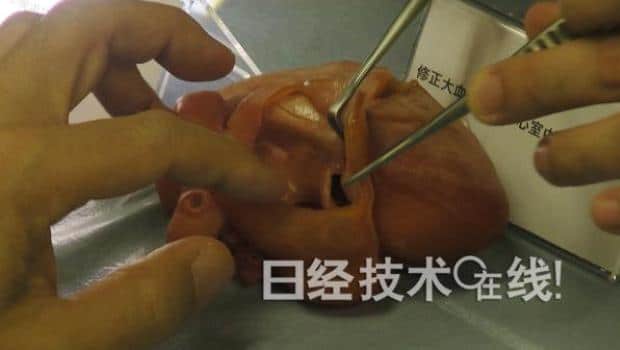Realistic heart models for children are being manufactured in Japan using 3D inkjet printing and organ modeling. These models have been developed by the Japan’s National Center for Circulatory Organs Disease Research Center, Japanese 3D printing company CrossEffect, the Minister of Pediatric Circulation, Screen Holdings, and chemical company Kyoeisha. These 3D printed heart models will soon be used for surgical planning for children.
Though this technology has been previously used by the research team, the procedure was cumbersome and the processing time was lengthy. For children who require immediate heart surgery, it was a long waiting time. The original process was also very costly. However, the current inkjet technology, a mold is no longer needed. This reduces the manufacturing process and also lessens the costs considerably.
The process of heart modeling as presented by the National Center for Circulatory Organs Disease Research Center last week is as follows. It involves using the data obtained from CT scans using a visceral organ modeling system which is developed by crossEffect. Screen Holdings then 3D prints the heart model with its inkjet 3D printers, using a special resin mold agent and proppant. The materials are supplied by the company Kyoeisha Chemical.
These heart models are constantly being improvised to perform better. These models will serve as accurate cardiac replicas for kids which will be mass produced and covered by insurance. They will slowly move towards producing them for adults with cardiac issues.
Mr. Shiraishi is the Minister of Pediatric Circulation of the perinatal circulatory organs and he said that the child’s heart is small and it is difficult to understand the surgical process because the shape is awkward. These 3D printed heart models will prepare doctors more efficiently for surgeries. This would result in shorter operation times and, in turn, shorter ischemic times. These 3D models will prove crucial in reducing the overall risk of the surgery.
